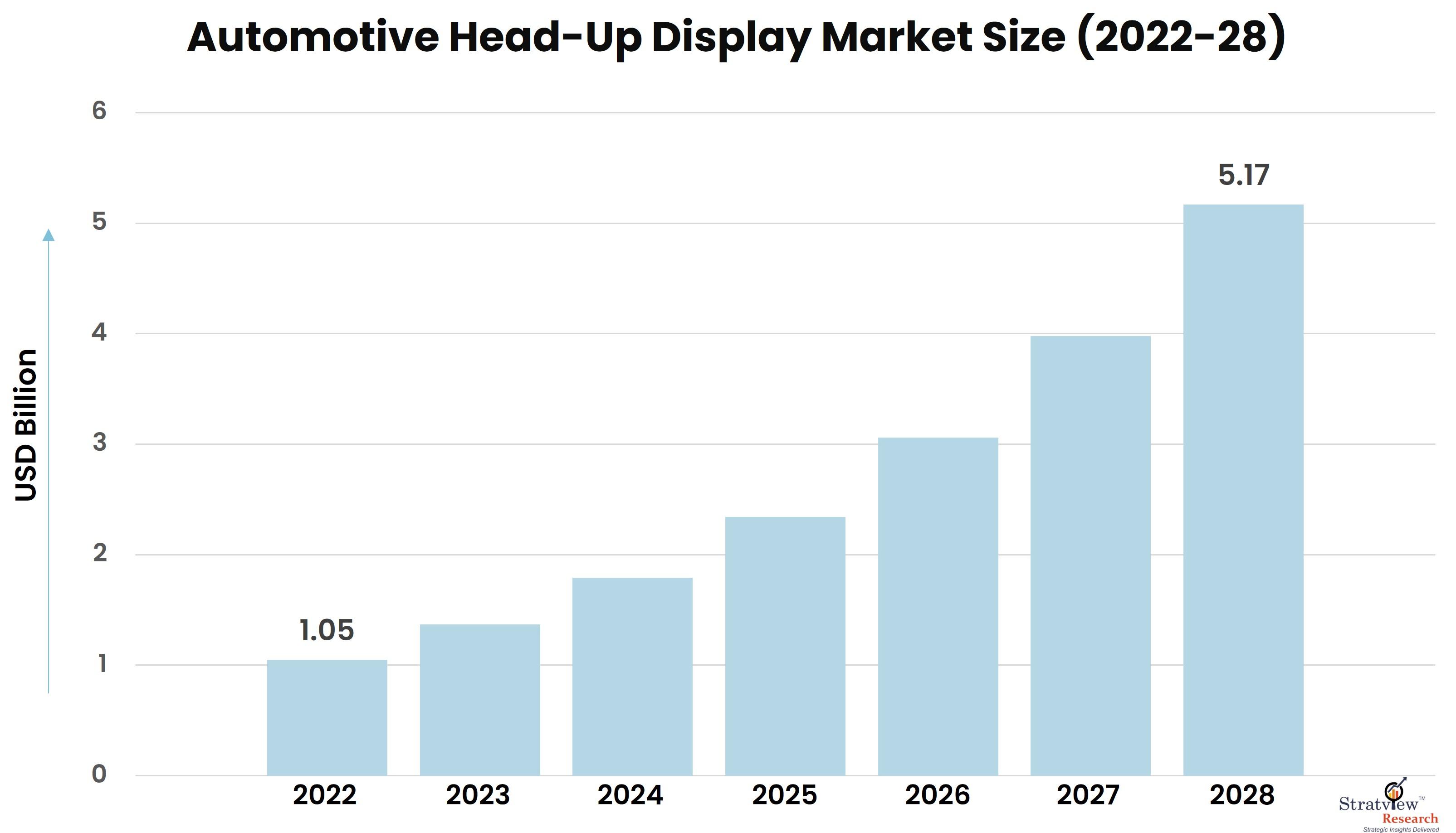Automotive Head-Up Displays: Analyzing the Competitive Landscape and Market Share

The automotive head-up display market is rapidly evolving, driven by technological advancements and increasing consumer demand for enhanced safety and in-car experiences. As a result, the market is becoming increasingly competitive, with both established automotive suppliers and new technology firms entering the space. In this article, we’ll analyze the competitive landscape of the automotive head-up display market and explore the market share distribution among key players.
According to Stratview Research, the automotive head-up display market was estimated at USD 1.05 billion in 2022 and is likely to grow at a CAGR of 30.42% during 2023-2028 to reach USD 5.17 billion in 2028.
Key Players and Market Share
The automotive head-up display market is dominated by a few large players who have established strong footholds by leveraging their expertise in display technologies and automotive systems. Leading companies include:
- Visteon Corporation: A key player in the automotive display industry, Visteon offers advanced head-up display solutions with AR capabilities, serving top-tier automakers globally. Visteon’s strong presence in both the luxury and mainstream vehicle segments makes it one of the market leaders.
- Continental AG: Another giant in automotive electronics, Continental provides head-up display systems that focus on improving driver safety and convenience. Their head-up display systems are known for integrating seamlessly with advanced driver assistance systems (ADAS).
- DENSO Corporation: DENSO’s head-up displays are integrated with its broader automotive technology solutions. The company has seen significant growth in the head-up display market, especially with its focus on safety-enhancing features.
- Nissan Motor Co., Ltd.: While not just a supplier, Nissan has also been developing in-house head-up display systems, particularly for its electric and autonomous vehicles. Nissan’s collaboration with tech firms helps it remain competitive.
These companies collectively hold a significant portion of the global automotive head-up display market, but there are several emerging players, particularly in the augmented reality (AR) head-up display space, that are working to capture market share.
Competitive Dynamics and Trends
The competitive dynamics of the head-up display market are being driven by three main factors:
- Technological Innovation: The push for more advanced and immersive head-up display systems, particularly those integrating AR and 3D imaging, is fueling innovation. Companies that can deliver cutting-edge technology will have a competitive advantage in attracting OEMs and Tier 1 suppliers.
- Integration with ADAS: As ADAS becomes standard in vehicles, automakers seek head-up display solutions that integrate seamlessly with these systems. Companies offering HUDs that provide real-time safety alerts, navigation, and other driving assistance features are gaining favor.
- Cost Reduction: While premium and luxury carmakers have driven demand for high-end head-up displays, mass-market players are working to reduce costs and make head-up displays accessible to a broader audience. This trend is creating a more competitive market as automakers seek cost-effective solutions.
Opportunities for Growth
The automotive head-up display market is poised for growth, especially in regions such as North America, Europe, and Asia-Pacific. As the automotive industry shifts toward electric vehicles and autonomous driving technologies, demand for head-up display systems is expected to rise, creating significant opportunities for both existing players and new entrants. Additionally, with increasing consumer preference for enhanced in-car experiences, companies that can combine innovation with affordability will likely capture a larger share of the market.
Conclusion
The competitive landscape of the automotive head-up display market is dynamic, with strong players leading the way in technological innovation, safety integration, and cost-effectiveness. As the market continues to evolve, companies that can balance advanced technology with accessibility will be well-positioned to secure their place in this growing industry. The future of automotive head-up display is bright, with ongoing advancements in AR, safety systems, and integration with autonomous vehicles driving further growth and competition.
- Art
- Causes
- Crafts
- Dance
- Drinks
- Film
- Fitness
- Food
- Jogos
- Gardening
- Health
- Início
- Literature
- Music
- Networking
- Outro
- Party
- Religion
- Shopping
- Sports
- Theater
- Wellness


